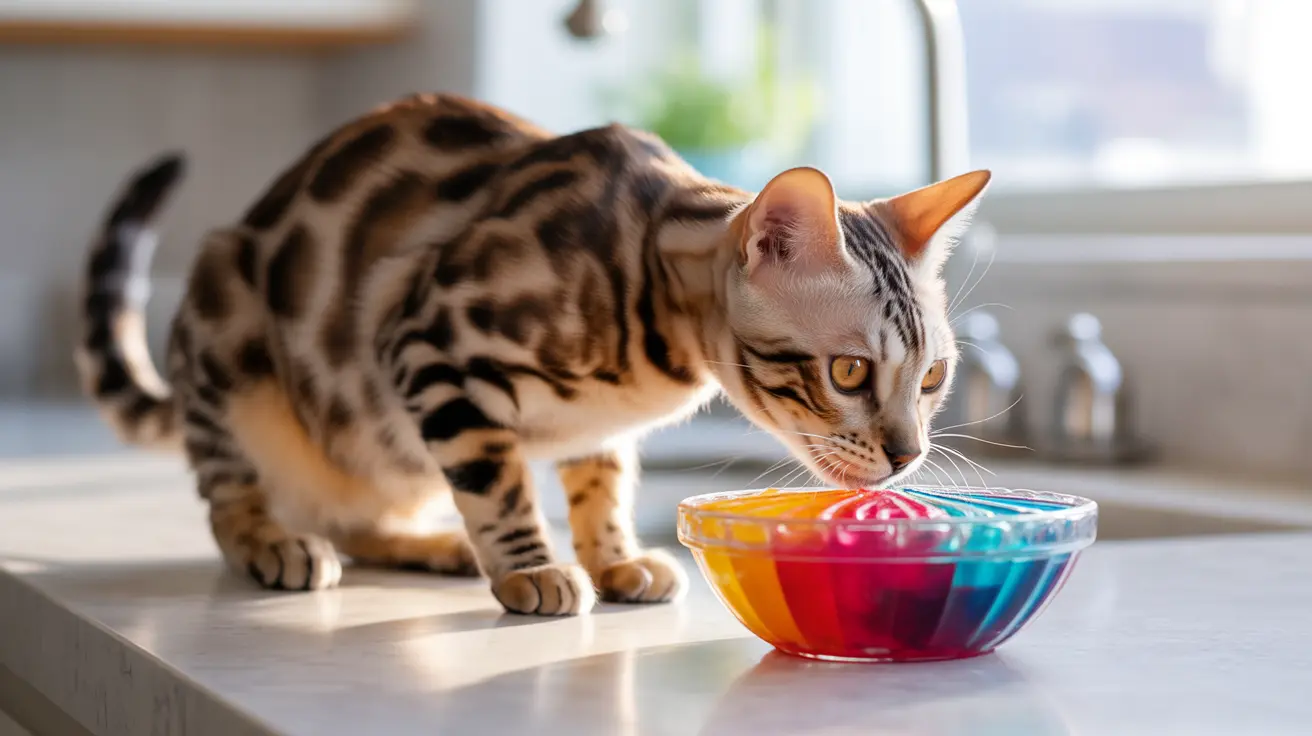As cat owners, we often wonder about sharing human treats with our feline friends. Jell-O, with its wobbly texture and bright colors, might seem like an entertaining snack option. However, before offering this popular dessert to your cat, it's crucial to understand the potential risks and safety considerations.
In this comprehensive guide, we'll explore whether cats can safely consume Jell-O, examine its ingredients, and discuss the potential health implications for your feline companion.
Understanding Jell-O's Ingredients and Their Effects on Cats
Jell-O primarily consists of gelatin, sugar, artificial flavors, and food coloring. While gelatin itself is derived from animal collagen, the additional ingredients in commercial Jell-O products raise several concerns for feline consumption:
- Sugar content can contribute to obesity and diabetes
- Artificial sweeteners, especially xylitol, are toxic to cats
- Food dyes may cause digestive upset
- Artificial flavors could trigger allergic reactions
The Truth About Cats and Gelatin
Plain, unflavored gelatin is generally safe for cats in very small amounts. However, the gelatin found in Jell-O comes packaged with potentially harmful additives. It's important to note that cats are obligate carnivores with no biological need for sugary treats or artificial ingredients.
Potential Health Risks of Feeding Jell-O to Cats
Immediate Concerns
When cats consume Jell-O, they may experience:
- Digestive upset
- Vomiting
- Diarrhea
- Lethargy
Long-term Health Issues
Regular consumption of Jell-O can lead to:
- Weight gain
- Dental problems
- Diabetes
- Metabolic disorders
Safe Alternatives to Jell-O for Cats
Instead of offering Jell-O, consider these cat-friendly treats:
- Commercial cat treats formulated for feline nutrition
- Small pieces of cooked, plain meat
- Freeze-dried meat treats
- Cat-specific dental treats
When to Contact Your Veterinarian
Seek immediate veterinary care if your cat has consumed Jell-O containing xylitol or shows any of these symptoms:
- Excessive vomiting or diarrhea
- Unusual lethargy
- Loss of appetite
- Difficulty walking or unusual behavior
Frequently Asked Questions
Is it safe to give my cat Jell-O or gelatin desserts?
No, while not immediately toxic (unless containing xylitol), Jell-O is not safe or recommended for cats. It contains unnecessary sugars and artificial ingredients that could harm your cat's health.
What ingredients in Jell-O are harmful to cats?
The most harmful ingredients include xylitol (artificial sweetener), excess sugar, artificial colors, and flavoring agents. Xylitol is particularly dangerous and can be lethal to cats.
Can plain, unflavored gelatin be beneficial for my cat's health?
Plain, unflavored gelatin might offer minimal joint health benefits due to its collagen content, but any supplementation should be discussed with your veterinarian first.
What should I do if my cat accidentally eats Jell-O containing xylitol?
If your cat consumes Jell-O containing xylitol, treat it as an emergency and contact your veterinarian immediately. Xylitol can cause rapid insulin release and potentially fatal hypoglycemia in cats.
What healthy treat alternatives can I offer my cat instead of Jell-O?
Focus on protein-rich, cat-specific treats such as commercial cat treats, small pieces of cooked meat, or freeze-dried meat treats. Always ensure treats make up no more than 10% of your cat's daily caloric intake.
Conclusion
While the curiosity about feeding Jell-O to cats is understandable, it's best to avoid this human dessert entirely. Instead, focus on providing your cat with species-appropriate treats that support their carnivorous dietary needs and overall health. When in doubt, always consult with your veterinarian about safe treat options for your feline friend.






